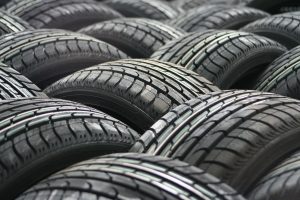Blog

In the last few years, car tyre labelling has been implemented across Europe, and you may be wondering what the labels mean. So we have created a thorough breakdown of the labels and what the categories mean, to help you make a knowledgeable decision on your next tyre.
What is tyre labelling?
In November 2012 an EU legislation was created which states that every new tyre in Europe must have a label to show its performance based on certain criteria. It is a simple, easy to read label, such as those seen on household appliances. There are three categories on it, fuel efficiency, wet grip, and exterior noise. Each category has a rating, fuel efficiency and wet grip have a scale which goes from a green A (good), to a red G (bad), and exterior noise is measured in decibels. The purpose of tyre labelling is to help customers make an informed choice when purchasing tyres, to improve road safety, and to lower the effect on the environment.
Fuel efficiency:
This category’s rating is based on the rolling resistance of the tyre. When a car is driving, the tyres are being pressed down onto the road by the weight of the car, this causes friction and affects the tyre’s ability to keep spinning. Rolling resistance is determined by how well the tyre can keep spinning and resist the friction. If a tyre spins easily, then the car is more fuel efficient because it requires less fuel to turn the wheels. An A-rated tyre can lower fuel consumption by 7.5 percent, which means you save about 6 litres of fuel for every 1000 kilometres. If consumers use this category to determine which tyre to buy, then it will help to make cars more environmentally friendly.
Wet grip:
A tyre’s ‘wet grip’ is decided by how well they can brake on slippery, wet roads. When the road is wet, braking takes longer, and tyres have grooves which help them to grip the road in these conditions. A tyre with larger grooves has better braking abilities and so would have a better rating. Highly rated tyres reduce the risk of aquaplaning on wet roads, which can be dangerous and life threatening. If a car is travelling at 50mph, A-rated tyres will brake up to 18 metres sooner than the lowest rating, this is why it is definitely worthwhile investing in highly rated tyres.
Exterior noise:
Tyres produce much more noise pollution than most people realise. Loud tyres can be unpleasant for drivers as they have to deal with the roar for their entire journey, which negatively affects the surrounding environment as well. Exterior noise tyre labels are rated in decibels, but most people are not familiar with this measurement, so a loudspeaker image with black waves indicates how loud the tyre is. One wave means quiet, two means moderate and three is noisy, above the European limit. In cities especially, noise pollution is a real issue and if more people buy quieter tyres then it will make a big difference to citizens’ quality of life.
If you want to learn more about which tyre is the best choice for you, our friendly team is always available. Here at Trade Tyre Services we provide a wide range of high quality tyres and an expert tyre fitting service to customers throughout Sutton Coldfield, Lichfield and the West Midlands region. Why don’t you contact us today?
